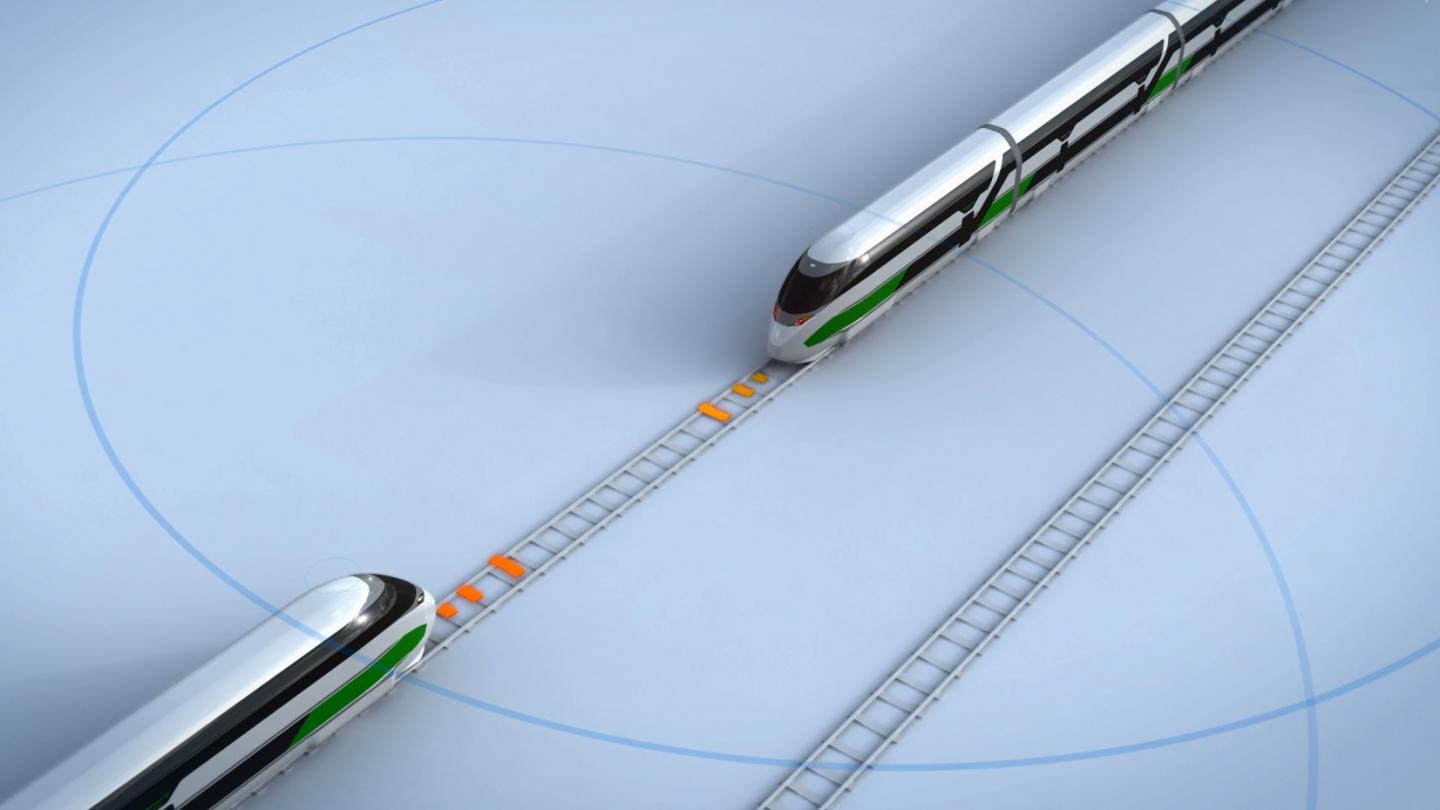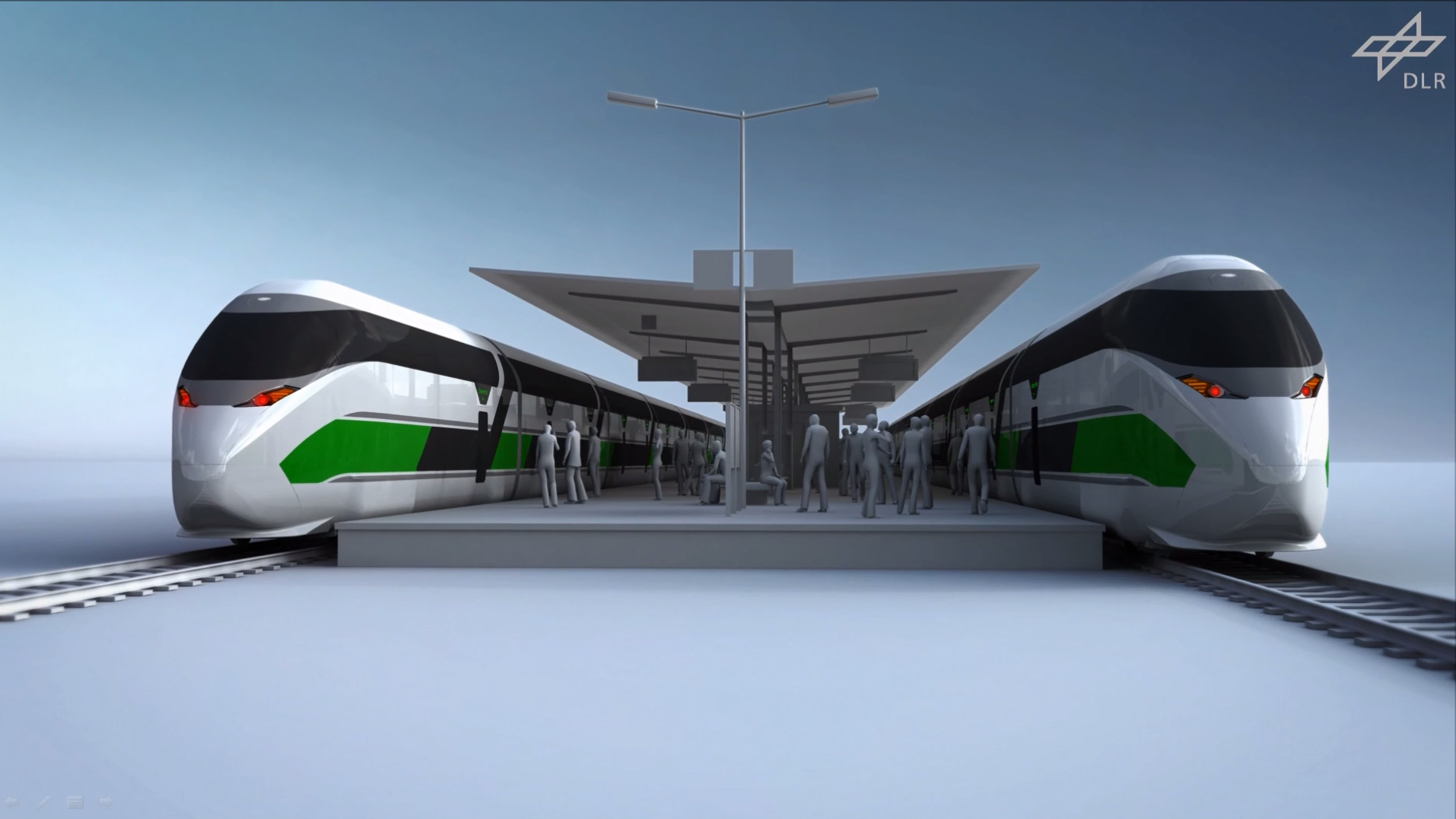
NGT – The Next Generation Train
For more than ten years, the German Aerospace Center (DLR - Deutsches Zentrum für Luft- und Raumfahrt e. V.) has been researching a concept for a future high-speed train, the Next Generation Train (NGT). The initial focus is on the design of a double-decker high-speed train for long-distance passenger transport (NGT High Speed Train - HST). Based on this, a feeder train (NGT LINK) is being developed that runs at lower speeds and connects regions away from the main lines to the NGT HST network. The NGT CARGO has been developed for rail freight transport since 2014. In addition to defining and developing the various versions, research work on individual issues is being advanced in parallel, e.g. chassis technology, aerodynamics, operating concepts, propulsion, passenger comfort or lightweight construction.
Virtual coupling allows trains to be strengthened and weakened during the journey
With virtually coupled train sets, there is no longer a mechanical connection between the individual train units. An operational-technical innovation of the NGT is the dynamic strengthening and weakening of trains during the journey. With this function, it is possible to virtually couple trains and thereby strengthen or weaken train formations even while the whole train is running.
Slip coaching - New technologies make historical mode of operation interesting again
One goal of the NGT BIT project (Next Generation Train – Backbone of Intermodal Transport) is to combine the new system functions from virtual coupling and dynamic strengthening and weakening of trains within a novel operating concept. The model for a future operating concept is the historic slip coaching process, which was used, for example, in British rail operations in the 20th century. The historical slip coaching approach is taken up and supplemented with functions such as dynamic strengthening and weakening of trains, virtual coupling and an electric drive for the individual wagon units. In the future slip coaching procedure, several train sections run virtually coupled between node stations. Only individual train sections stop at intermediate stations, while the main train can pass through at full speed. Rising passenger numbers can be countered with an expansion of the timetable offer in long-distance passenger rail transport. The new slip coaching procedure could help to implement an improved service with higher frequency, reduced travel times and additional direct connections on existing infrastructure. The modern slip coaching process demonstrates an additional operational application of virtual coupling. The process makes it clear that major system improvements in high-speed rail transport can be realized, if this technology is implemented.

Online demonstrator for virtual coupling and slip coaching
An interactive online demonstrator was created to show the effects of virtual coupling and slip coaching. The software consists of a graphical user interface and offers users the possibility to change numerous parameters and directly view the effects. The aim is to give interested users an overview of the technological basics and the current state of development. Furthermore, the expected effects on a railway system operated with virtual coupling and slip coaching will be clarified.
To start the demonstrator please follow the link below:
For best demonstrator experience, the use of Microsoft Edge or Google Chrome is recommended.
For performance reasons, the demonstrator should ideally be used in a desktop environment or on a notebook.
Project name:
NGT BIT Slip Coaching and Virtual Coupling Demonstrator
Duration:
01/2019 to 12/2021
Project volume:
financed by the project NGT BIT - Next Generation Train Backbone of Intermodal Transport (basic funding of the DLR Program Directorate Transport)
Client:
DLR Program Directorate Transport, German Aerospace Center, Cologne
Project participants:
DLR-Institute of Transportation Systems
DLR-Institute of Vehicle Concepts
DLR-Institute of Software Technology
